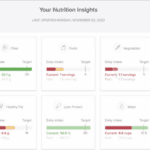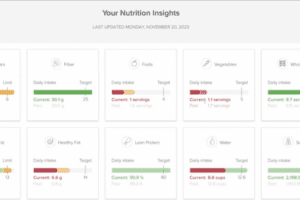One of the nice things about living in Las Vegas is that almost all the health IT conferences come to Las Vegas. Sadly, that wasn’t actually true for the Cerner user conference which was held in Kansas City. However, now that Oracle bought Cerner, the Oracle Health conference is now co-located with Oracle World and is being held in Las Vegas.
Of course, there are also downsides to conferences being in Las Vegas where family considerations pull me away from the event. For example, I missed Larry Ellison’s keynote, but Kristian Feterik did a nice job capturing at least part of Ellison’s vision for Oracle Health in this tweet.
Larry Ellison on the vision for future: AI will simplify the way clinicians interact with EHR, from chart review to clinical documentation to order entry #OracleHC @Oracle @OracleHealth pic.twitter.com/40dIVApPwG
— Kristian Feterik (@KFeterik) September 19, 2023
In fact, this vision was captured in multiple elements of the Oracle Health keynote start to the conference. Below you’ll find a summary of some of the perspectives and announcements I heard at the conference. They provide a pretty good summary of where I think Oracle Health is headed and what we can expect from them going forward.
Kicking off the @OracleHealth event. Excited to learn more about the transition from Cerner to Oracle Health. #oraclehc #hitsm pic.twitter.com/EgswLqpjFX
— John Lynn (@techguy) September 18, 2023
One of the biggest takeaways from the event is that Cerner had a big global opportunity before, but Oracle’s international resources are going to accelerate that effort dramatically. At Healthcare IT Today we’ve often talked about the international opportunity that’s available to EHR vendors and that Oracle will bring a lot of resources internationally. This seems to be playing out well including a customer announcement in the UAE that was shared at the event. The US EHR market is quite saturated, but the same isn’t true internationally.
We’re a global operator and not just a local operator. @OracleHealth #oraclehc
— John Lynn (@techguy) September 19, 2023
Another not surprising topic was Oracle Health’s efforts to bridge the clinical systems (EHR) and the business systems (ERP). Of course, there are a lot of other systems beyond the EHR and ERP, but it makes sense that Oracle Health is uniquely positioned to try and bridge the gap between those systems. It’s true that there is a shocking disconnect between the two.
There’s a shocking disconnect between the systems healthcare uses to provide care and the systems used to run the business. @OracleHealth #oraclehc
— John Lynn (@techguy) September 19, 2023
The image below shows a good look at the suite of applications Oracle Health offers and is working to connect as described above.
A look at the full suite of applications for healthcare. @OracleHealth #oraclehc pic.twitter.com/rHUbH7mTaX
— John Lynn (@techguy) September 19, 2023
Another announcement that’s not a big surprise is Oracles efforts to move all Cerner solutions to OCI (Oracle Cloud Infrastructure). There has been a lot made of this move and the value it can provide healthcare organizations when it comes to speed, security, and costs. In one of the presentations they showed a picture of an empty data center after the move to the Oracle Cloud. That’s certainly the direction Oracle Health is headed.
All Cerner solutions are moving to Oracle Cloud Infrastructure (OCI). @OracleHealth #oraclehc
— John Lynn (@techguy) September 19, 2023
Healthcare APIs have often fallen behind other industries and have often been held very close to the vest. That’s still true with many EHR vendors unfortunately. Oracle Health announced that al their APIs would be made publicly available to their customers and partners that want to build on them. Plus, they announced a 300% expansion of their API surface area. The devil is in the details here on what data they’re going to make available in the APIs, but growth of API access is a valuable thing for many. Although, one promising element is that Oracle Health plans to use these APIs to connect their own systems together. That means they’ll be their own customer of these APIs which usually means they have to be built well.
Announcement of expansion of @OracleHealth APIs. All APIs are public. #oraclehc pic.twitter.com/R7Y5Yjmz3h
— John Lynn (@techguy) September 19, 2023
A topic that wasn’t discussed too much in the discussions I saw was leveraging the Cerner Millenium data and other EHR data in life sciences. There was one part of the keynote with Seema Verma that talked about bridging the gap from clinical care to clinical trials, but not too many details on how to really bridge that gap. No doubt this is a big opportunity for Oracle Cerner since most life science companies are on Oracle in some form or fashion.
Next up is @HealthcareSeema on bridging the gap from clinical care to clinical trials.
Do you think @OracleHealth is well positioned to do this? I think they are. #oraclehc pic.twitter.com/txL84jfNaF
— John Lynn (@techguy) September 19, 2023
In that session with Verma, they did talk about the desire for more real world data by pharma and life sciences. Verma even talked about her time at HHS and how they wanted the real world data to prove the effectiveness of drugs. I’m sure we’ll hear more about this in the future.
Not surprising that pharma wants more real world data. Wasn’t true in the past the way it is today.
HHS wants more RWD too before paying for something (ie. clinical effectiveness) #oraclehc
— John Lynn (@techguy) September 19, 2023
The desire to work on clinical trial recruitment with more community hospitals as interesting. We’ll see if Oracle Health can help them bridge that gap.
Historically we’ve used the academic medical centers for clinical trials recruitment, but now we’re using more and more community hospitals. #oraclehc
— John Lynn (@techguy) September 19, 2023
Everyone was interested in what Oracle Health would say about AI. Below you’ll find the high level view of how they’re approaching AI in three different ways.
The three ways @OracleHealth is looking at investing in AI. #oraclehc pic.twitter.com/GuFFZykchI
— John Lynn (@techguy) September 19, 2023
I’d say that Oracle Health is still keeping their cards pretty close to their chest when it comes to AI. I heard one executive talk about how many other EHR vendors are issuing announcements about AI that are basic tools with a small AI wrapper. I actually think he’s right in many cases. Another AI expert I talked to recently said the same thing. Many EHR vendors are using AI, but only for very basic tasks. It seems like Oracle Health is working on deeper integrations of AI that take more time to refine and implement rather than announcing the window dressing AI solution.
An example of what this may look like was demonstrated on stage by Dr. Feinberg in what could be described as a clickless visit. You can watch the full Oracle Health opening keynote and this demo near the end of the keynote here. The most interesting part of the demo for me was seeing Dr. Feinberg using voice to get the pre-visit info about the patient before going into the room. I hadn’t seen something like that really done by other EHR. Then, Dr. Feinberg showed what essentially amounts to an ambient clinical voice demo of the charting for a visit with the AI listening. There were some other nuances to the demo you can check in the full video linked above.
I still think it’s early days in the integration of the Cerner products with the Oracle infrastructure and the rewrite of a number of systems to work on the Oracle stack. However, a number of things were made clearer at the user conference.














Where were they handing out the rose-colored glasses? I thought they were long on vision but short on substance.
I think my view may be skewed by some of the deeper discussions I had with people at the conference. The keynote was longer on vision and less on details, but it does show their focus. As I said, I think they’re holding a bunch of what they’re doing with AI close to the vest.